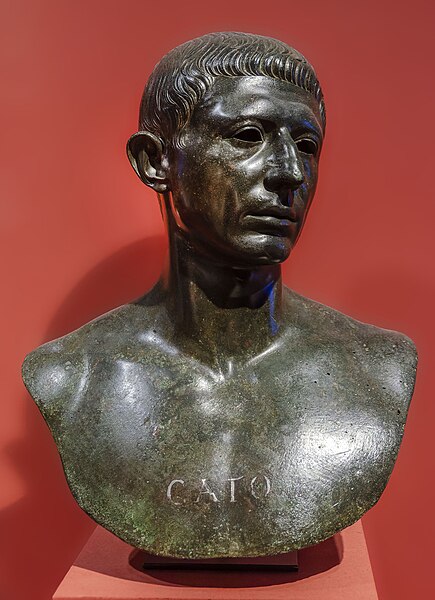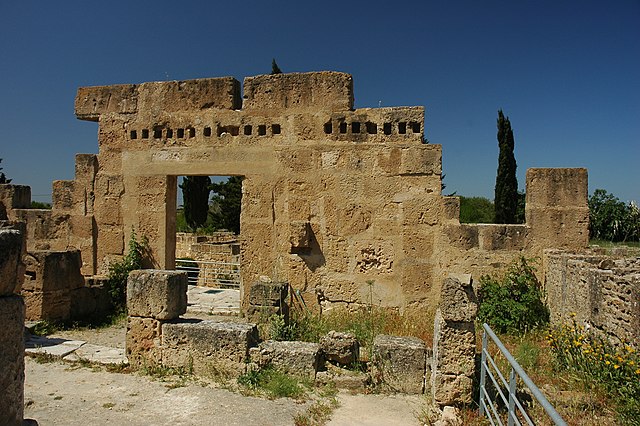Marcus Porcius Cato Uticensis, also known as Cato the Younger, was an influential conservative Roman senator during the late Republic. His conservative principles were focused on the preservation of what he saw as old Roman values in decline. A noted orator and a follower of Stoicism, his scrupulous honesty and professed respect for tradition gave him a powerful political following which he mobilised against powerful generals of his day, including Julius Caesar and Pompey.
Inscribed bronze bust from Volubilis
Statue of Cato the Younger in the Louvre Museum. He is about to kill himself while reading the Phaedo, a dialogue of Plato which describes the death of Socrates. The statue was begun by Jean-Baptiste Roman (Paris, 1792–1835) using white Carrara marble. It was finished by François Rude (Dijon, 1784 – Paris, 1855).
The basilica Porcia was a small building to the left of the curia Hostilia (in red) in the Roman Forum raised by Cato's great-grandfather. It was Rome's first basilica; it burnt down in 52 BC.
Propaganda cup of Cato (the cup to the left, the one to the right being dedicated to Catiline), for his canvass for the plebeian tribunate of 62 BC. These cups, filled with food or drinks, were distributed in the streets to the people, and bore an inscription supporting the candidate to the election.
Utica was an ancient Phoenician and Carthaginian city located near the outflow of the Medjerda River into the Mediterranean, between Carthage in the south and Hippo Diarrhytus in the north. It is traditionally considered to be the first colony to have been founded by the Phoenicians in North Africa. After Carthage's loss to Rome in the Punic Wars, Utica was an important Roman colony for seven centuries.
The ruins of Utica
Utica museum, museum established in 1990
Statue of Trajan from Utica ruins
Utica columns








